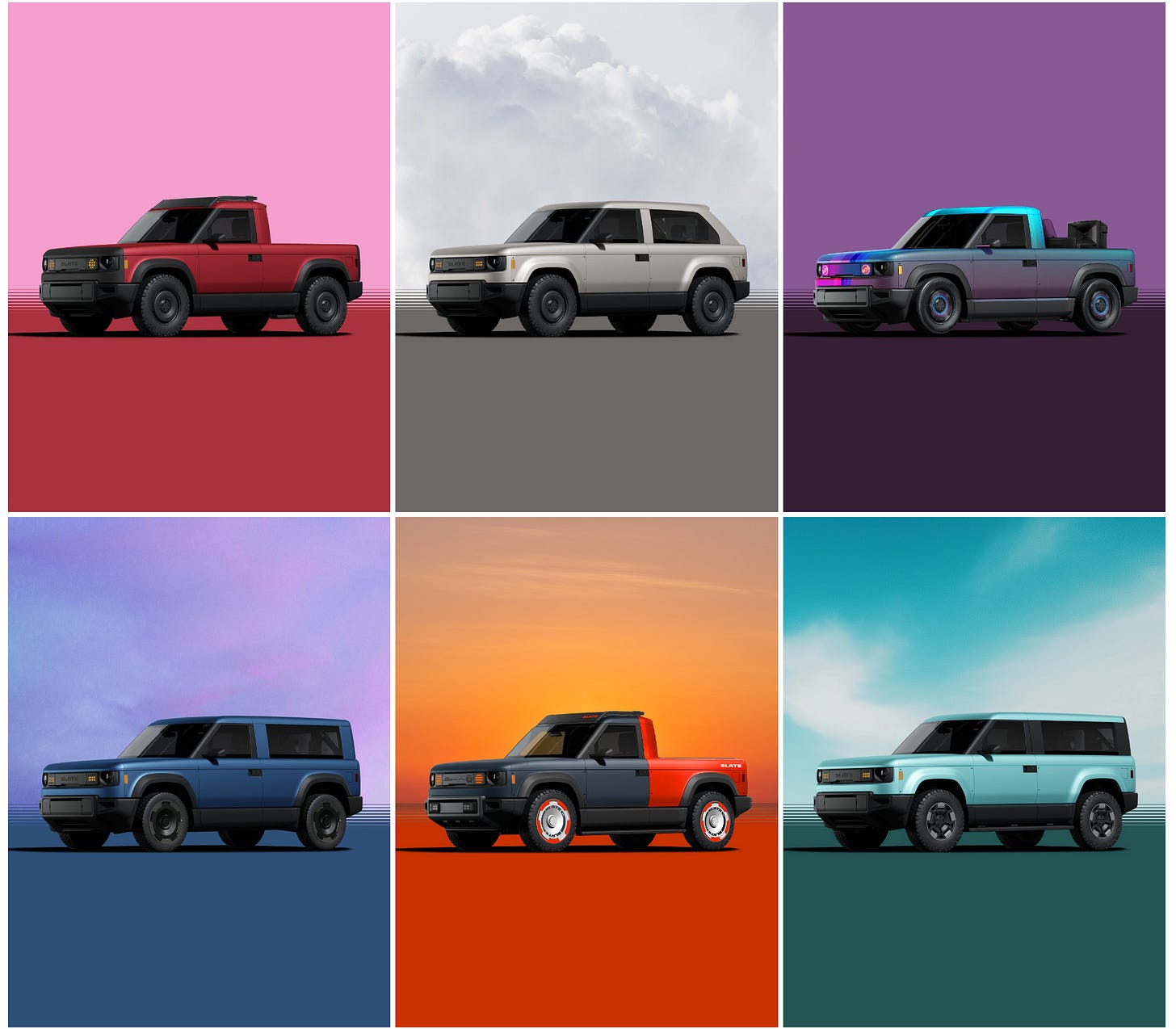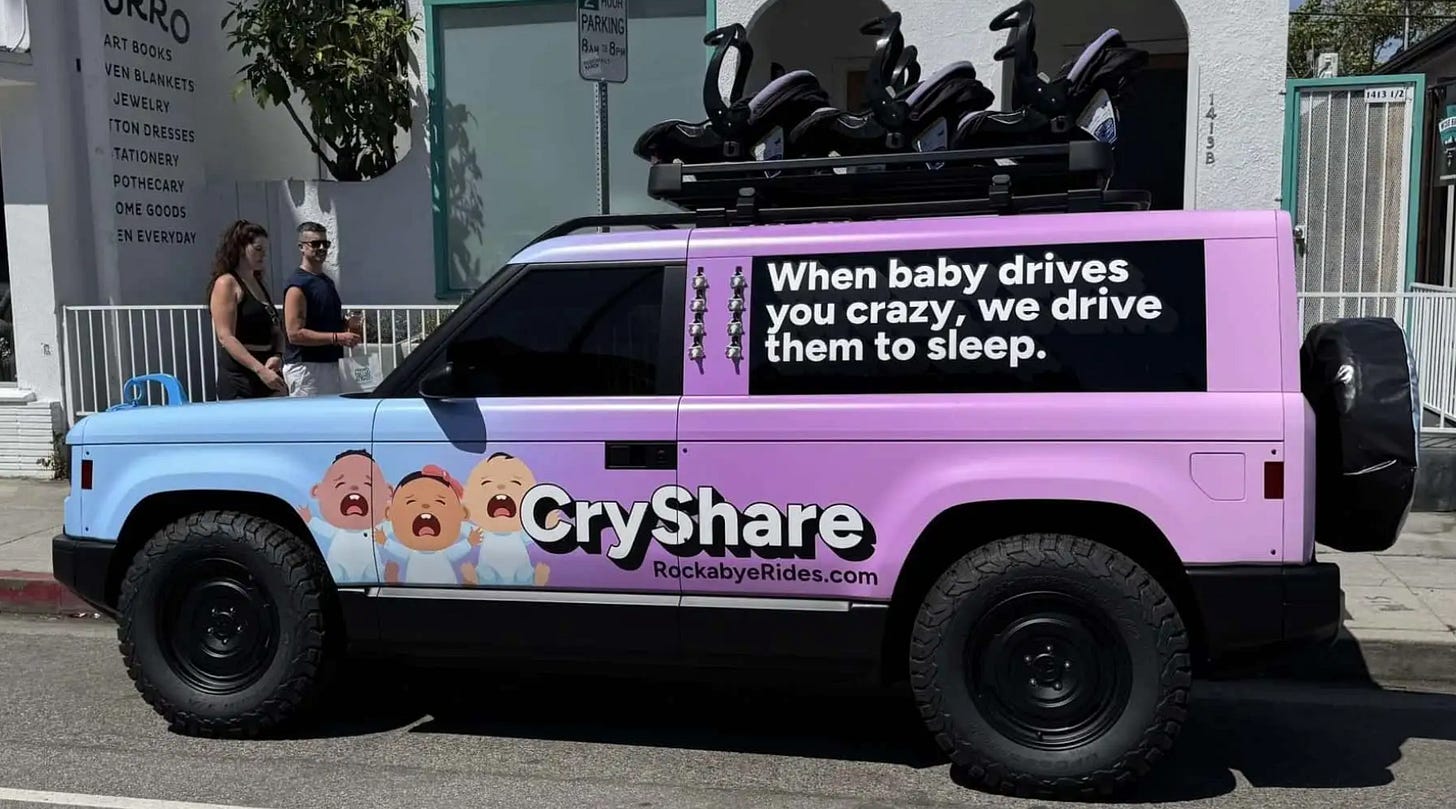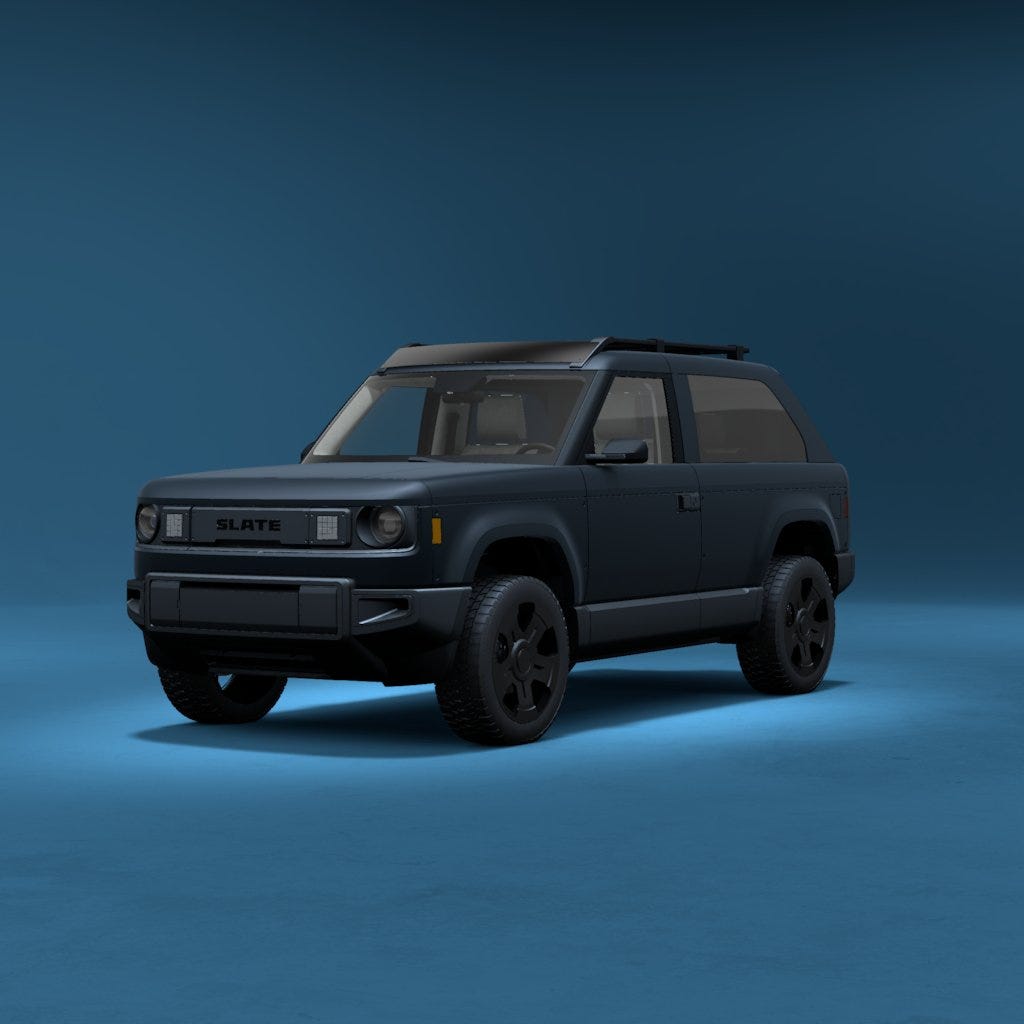Launch Lessons from Slate
Want to launch a new product? Look to the newest EV startup for tips
That was a launch!
Readers of this newsletter know I’m particularly interested in the EV space right now—how these new vehicles are reshaping our world, how they’re being developed, and how they’re being marketed. I devoted a ton of time to covering the now-defunct Swedish EV motorcycle brand CAKE with some fairly fawning writing. I loved riding the quiet, zippy motorcycles and, as a content marketer, loved that they leaned hard into building brand awareness through striking visuals, great videos, and smart partnerships.
Unfortunately, that wasn’t enough. The EV world is still new, and it’s hard to get consumers to embrace unfamiliar technologies. Turns out, no amount of frozen lake wheelie videos could drive enough sales for CAKE to survive.
So it’s with that in mind that I’ve been thinking hard about last week’s Slate launch. Slate is a new affordable EV truck brand. The gist? Highly customizable, American-made EV trucks at an affordable price point. They’re boxy and, like CAKE, totally in line with my personal style and design taste. (I’ve been harping on about the lack of normal-sized trucks, like the old Tacomas. Why do all the new pickups have to be so huge?)
The auto industry is experiencing a surge of innovation—new brands, new vehicles, new ideas. Are we living through the most innovative chapter in its history? It certainly feels that way. Slate is just the latest addition to this rapidly growing space, alongside a wave of Chinese brands.
So how does a brand like Slate stand out? How do you build awareness and interest in a new auto brand? How do you maintain excitement? How do you get someone to actually reserve a truck, sight unseen?
These are the questions running through my head whenever I watch a new brand launch in this space.
Let’s take a look at how this casual observer went from awareness to full-on fanboy.
Slate kept things in stealth mode for years. Operating as “Project RE:Car” under the larger RE:Build Manufacturing umbrella, the company technically existed—but not as a brand. Industry insiders probably recognized what was going on through job postings and quiet activity. But for the rest of us, it stayed under the radar until almost the last possible moment.
But then came that moment.
A few weeks ago, a new small truck was spotted on the back of a pickup. Could this be the one Bezos invested in?
A visit to the website showed a countdown clock. Something was coming.
This was my first introduction to the brand, and my interest was piqued. The leaked photo seemed unintentional, but you never know. Could it have been a deliberate tease? A way to warm up the press? Maybe. But fast forward a couple of weeks, and things got much more deliberate.
Slate trucks started popping up wrapped in faux brand logos in very public places—like Venice Beach. It was a smart move. Sometimes these kinds of stunts can feel gimmicky or fall flat, but this one landed. It gave influencers and auto blogs something to talk about, and more importantly, a place to go get their content. I personally love the idea of just parking the truck on the street and letting people discover it like an Easter egg.
And Venice Beach was a smart pick. LA is full of influencers, and car culture is massive. This wouldn’t have played the same in SoHo or Miami.
Then came launch day. The countdown clock hit zero. Slate officially launched, inviting a wide mix of influencers and press to its unveiling event. By that point, a lot of us were already tuned in. Alongside the event, Slate launched a website with a custom truck builder. Not a new idea (think Nike ID), but it worked. Given the brand’s emphasis on customization, it reinforced the idea that this truck can be your truck. Add in the built-in sharing functionality, and suddenly they’d created a little social media engine—people designing and sharing their personalized Slates.
A few other clever moves followed: a paid ad buy on Slate (the publication), and a series of well-produced brand videos featuring Slate’s CEO and team.
The tone of the videos is friendly and informative—a clear signal that Slate isn’t going after the luxury EV market. They’re betting there’s an audience for something more approachable, more useful. I hope they’re right.
Since then, the brand has kept up the momentum with playful content across social platforms.
The real test for Slate’s marketing team will be how they sustain this interest in the months to come—especially before anyone can actually get behind the wheel. Glossy photos and clever videos can only go so far, as we learned from CAKE. Eventually, people will need to drive it.
I’ll be keeping a close eye on Slate—and rooting for them along the way.
Watching
Few shows have hooked me in like The Agency. I knew this one would be in my wheelhouse, but I just put off watching it for a while because I don’t subscribe to Showtime. I finally bit the bullet, watched the free first episode, and bought the entire season within 15 minutes.
Listening
I got to see Scree last week at the Owl in Brooklyn and this was one of my favorites.










Affordable and customizable are two adjectives I missed from the automotive industry. This truck got great potential to fill a gap amidst car makers.